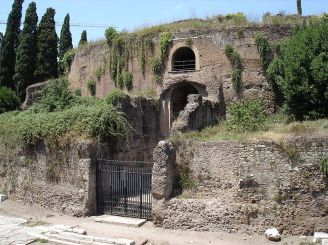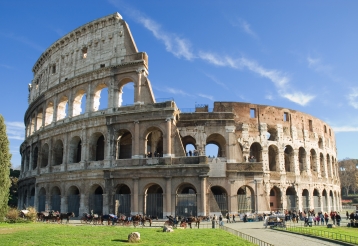Monterozzi necropolis, Tarquinia
The Monterozzi necropolis in Tarquinia, just like the Necropolis of the Banditaccia in Cerveteri, is considered to be a World Heritage Site. Its large territory boasts around 6000 tombs. Besides the center of the town, remarkable for its distinctive medieval features, the museum located in a palace – another beautiful piece of architecture - also deserves attention.
History of the necropolis
The Etruscan civilization and burial practices were developing here almost the same way as they were in Cerveteri, however with a significant differing detail. Among the 12 Etruscan city-states, Civita (today’s Tarquinia) was the most prestigious and advanced. Moreover, it is also known as the mother of Etruria. The city was founded in the 12th century and its prosperous time dates back to 4th century BC. After numerous wars with Rome, the civilization ceased existing in the 2nd century BC.
The first-ever excavations in the necropolis area were carried out in 1489. In the early 19th century the majority of tombs we know today were discovered. In 1834 this place was visited personally by Ludwig I, king of Bavaria, and the sight was so awe-striking that he ordered to make replicas of the Etruscan frescos for the Alte Pinakothek in Munich. Geophysical survey techniques have become a common practice in necropolis since the mid-twentieth century.
Tarquinia’s tombs
Necropolis and Etruscan tomb layout share similarities: identical looking houses, streets, city squares. Stretching for 6 km, the Monterozzi hill hides over 6000 graves. Most of them were built just for one married couple. The most prestigious place for burial is considered to be the one with 200 splendidly painted tombs. Currently, tourists can visit only 19 separate graves.
- The Tomb of the Lionesses (Tomba delle Leonesse). ?. It has paintings of the sea, jumping dolphins, and soaring birds and right above all that – scenes from the life of Etruscan noblemen.
- The Tomb of the Hunter (Tomba del Cacciatore). This is an accurately recreated ancient hunter house supported on poles.
- The Tomb of Hunting and Fishing (Tomba della Caccia e della Pesca). Consists of 2 rooms. The first one has depictions of dance in a Dionysian sacred grove, the other one – illustrations of hunting, fishing and portraits of owners.
- The Tomb of the Augurs. Walls in here depict men: there are young and old athletes wrestling with each other, dancing bearded Etruscan and two men with black beards at the door.
- The Tomb of the Bulls. There are three series of illustrations inside the tomb: a scene from the Iliad, horseman being chased by a bull and two sphynxes.
- The Tarquinia National Museum. It is located in the center of the city, in Palazzo Vitelleschi, beautiful palace from the 15th century. The museum houses sarcophagi and household items of Etruscan nobility found during the excavations. Terracotta bas-relief showing winged horses is the highlight of the collection.
How to get
You can reach the necropolis which is located on Via Ripagretta by foot or by the free of charge bus. Tarquinia itself is situated 90 km northwest of Rome. Take the train at Roma Termini station to Tarquinia station – the ride costs around 7 Euros and will last for less than an hour. Consider taking a Cotral bus as well – you can catch it at the Cornelia subway station, the trip usually takes around one and a half hour. If you travel by car, be sure to drive along Autostrada A12 and follow the roadsigns.
Opening hours: depend on the season. The necropolis opens at 8:30 and closes an hour before the sundown between the end of October and the end of March. During the rest of the year it is open from 8:30 till 19:30 daily, except for Mondays, January 1 and December 25.
Admission: full-price ticket for the necropolis and the museum costs 7 Euros, cut-price ones – 4 Euros. Full-price tickets for only one separate sight cost 6 Euros, cut-price ones – 3 Euros. Cut-price tickets can be purchased by EU citizens in the 18–25 age range. Admission is free for students under 18. People can also visit the place for free on the first Sunday of every month.






